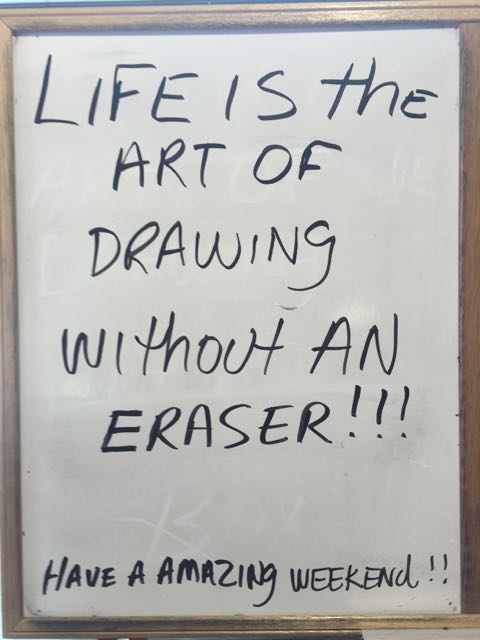
However, if we have an attitude of “TRY”, we likely treat it with less than full effort and small obstacles will likely dissuade us from our goal.
The “DOING” Life of Agile
Agile is the art of “DOING” when you don’t know everything you need to do. It is the art of getting something done when the way forward is foggy and questionable.
“Why should I waste time on something that might have to be redone later?” is a question I hear from agile team members. Why indeed. My response is: “You will make mistakes, whether now or later. If I tell you what to do now, it will also likely be wrong and need to be redone as well.” So go ahead and make them now and get them out of the way. Redoing work is part of the process.
All new development initiatives have a high degree of uncertainty. Unlike manufacturing, where the same product is pieced together repeatedly and repeatable processes can reduce variability and defects, new product development is a design factory where every input is unique and the only way to create value is to do something different. In this world, you will make mistakes – that is where value is found.
“DOING” Crosswords in Pen (a metaphor)
I love to DO crossword puzzles. I will often print out a week’s worth of crossword puzzles from our online local newspaper and do one each morning as I am eating breakfast — a great morning mind stimulator. I know, I am a geek – my wife tells me this all the time.
 Speaking of my wife, my mother-in-law often wonders why I do my crossword puzzles in pen. She can’t believe that I know all of the answers from the beginning when she always finds herself erasing wrong answers again and again.
Speaking of my wife, my mother-in-law often wonders why I do my crossword puzzles in pen. She can’t believe that I know all of the answers from the beginning when she always finds herself erasing wrong answers again and again.
However, I have never been comfortable with using a pencil on crossword puzzles. Not because I don’t make mistakes: I make them all the time. And not because I know all of the answers: I am only an average crossword puzzle solver.
I find it more valuable to write what I know and leave open what I don’t know. I find that filling in an answer I’m not 100% sure of is actually sometimes more harmful because it leads me astray with other clues — they won’t fit with another incorrect answer. As I write answers I’m sure of into the puzzle, the unknowns slowly become visible. By confidently sticking to what I’m sure of, the rest often unfolds.
This animated GIF is me solving a crossword in pen. It’s not linear process.
The Last Responsible Moment
A common saying in the Lean and Agile community is to delay your decision until “the last responsible moment.” What this means is that if you make a decision before you have enough information, it will likely be the wrong decision. If you delay your decision past the point of critical path where that decision delays other work and progress, you will waste time. Make a decision at the point that you are confident it is correct, but also early enough to recover if it is wrong.
This is the balance between doing what you know, being okay to leave aside the things that you do not know, and being comfortable with the potential changes you will need to make once the unknown has surfaced. Don’t be too obsessed with what you don’t know; thinking more about them is just a waste of time. As you do what you know, the unknowns will begin to surface.
Failure IS Required
As an Agile Leader, you can, and should, expect failure. Heck, you might even plan for failure. Another common Agile quote is to “fail fast.” We learn as much or more by doing than we learn by thinking or talking about it. However, when we “DO” we will likely do it wrong. That doesn’t mean you should do it with a pencil and erase; it means you should do what you know in pen, and be comfortable that you will get some of it wrong.
The faster you DO, the faster you will learn and the faster you can discover the unknowns.
When you’re working on your next project, leave “try” out of the equation, and focus instead on “do.”
